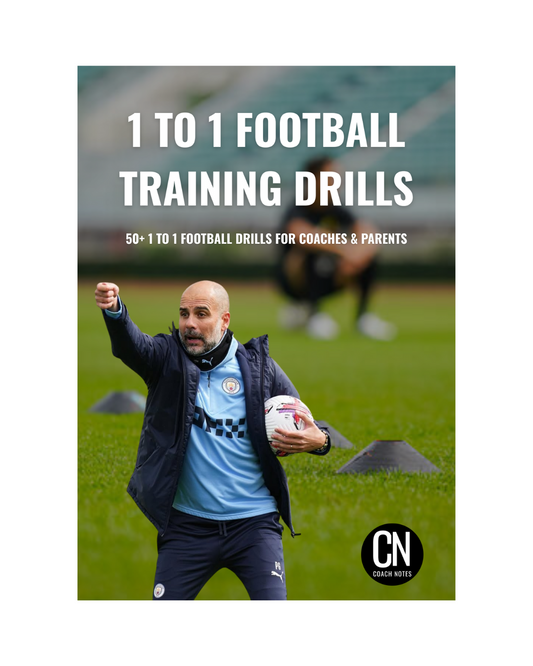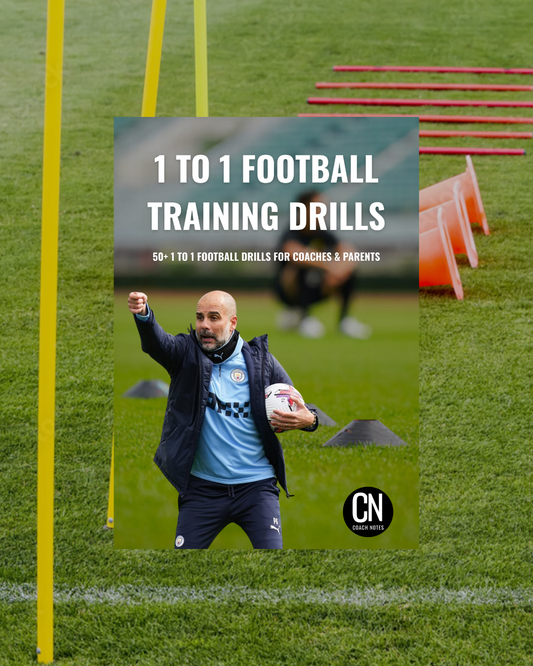
How to Coach Effective Vertical Football
Share
How to Coach Effective Vertical Football – The Rise of Direct, Forward-First Play
For much of the last decade, possession-based football reigned supreme. Teams prioritised patient build-up, circulating the ball to dominate possession and wait for the perfect opening. But recently, there's been a shift. Direct, vertical football is making a resurgence—and it’s proving to be one of the most effective tactical weapons in the modern game.
Just look at the likes of Newcastle United, Nottingham Forest, and Bournemouth. These sides are not just lumping the ball forward. They’re playing with intent—bypassing pressure with vertical passes, launching rapid attacks, and punishing disorganised defences. This brand of football is about purposeful progression, not hopeful punting.
Why is Vertical Play So Effective?
Bypasses High Pressing Teams
Aggressive pressing is common, especially in deep areas. Vertical play allows teams to go through or over the press quickly, exposing the opposition’s shape before they can react.
Creates Counter-Attack Scenarios
When a team wins the first or second ball high up the pitch, they can immediately attack a defence that isn’t set—leading to high-quality chances.
Maximises Fast, Direct Players
Players like Anthony Gordon, Callum Hudson-Odoi, and Antoine Semenyo thrive when given space to attack. Quick vertical passing gets them 1v1 with defenders before the defence can reorganise.
Forces Defensive Mistakes
Direct football puts defenders under pressure. A mistimed clearance or step forward can result in instant danger, giving attackers the opportunity to capitalise.
This isn't about aimless long balls—it’s about recognising the right moment to go forward quickly. Whether it’s a line-breaking pass into midfield or an early ball to a wide runner, vertical play is about getting from back to front with clarity and speed.
How Coaches Can Train Vertical Football
To play vertically with intelligence, teams must be coached with deliberate structure and tactical intent. Here’s how to build vertical principles into your training sessions:
1. Train Players to Recognise the Right Moment
Not every pass should go forward, but players must learn when to exploit space. Use small-sided games where progression is only allowed once the opposition commits to a press. This encourages players to draw defenders in, then break lines with speed.
2. Win First and Second Balls in Key Areas
A vertical pass only becomes effective if your team is positioned to support it. Train players to:
- Anticipate where the second ball might drop.
- Press aggressively when the opponent attempts to clear.
- Overload midfield zones to dominate central loose balls.
This approach ensures your team not only plays forward, but regains control to launch meaningful attacks.
3. Encourage Quick Vertical Combinations
Vertical play thrives on efficiency, not just length. Develop quick patterns by coaching players to:
- Receive on the half-turn to play forward instantly.
- Use one-touch layoffs to support forward movement.
- Make early runs into space and time the pass to match the movement.
It’s this rhythm and timing that separates effective vertical football from simple route one.
4. Condition Players to Play Forward First
Possession for the sake of it often kills momentum. To reinforce a forward-thinking mindset:
- Use rules-based games where backward passes are restricted.
- Reward teams that break the opposition’s press within a certain time frame or number of passes.
- Encourage risk-taking in the right zones of the pitch.
By shifting players’ default mentality from safe possession to progressive intent, your team becomes more threatening in transition.
Final Thought
Vertical football is not a return to outdated tactics—it’s a modern response to modern problems. In an era where pressing is relentless and spaces appear only briefly, the ability to play forward quickly, accurately, and intelligently is invaluable.
If you want your team to become more direct, it starts with training the why, not just the how. Players must understand the moments to go, be brave in execution, and ready to hunt for the next action.
Let them recognise the moment. Then let them go.









